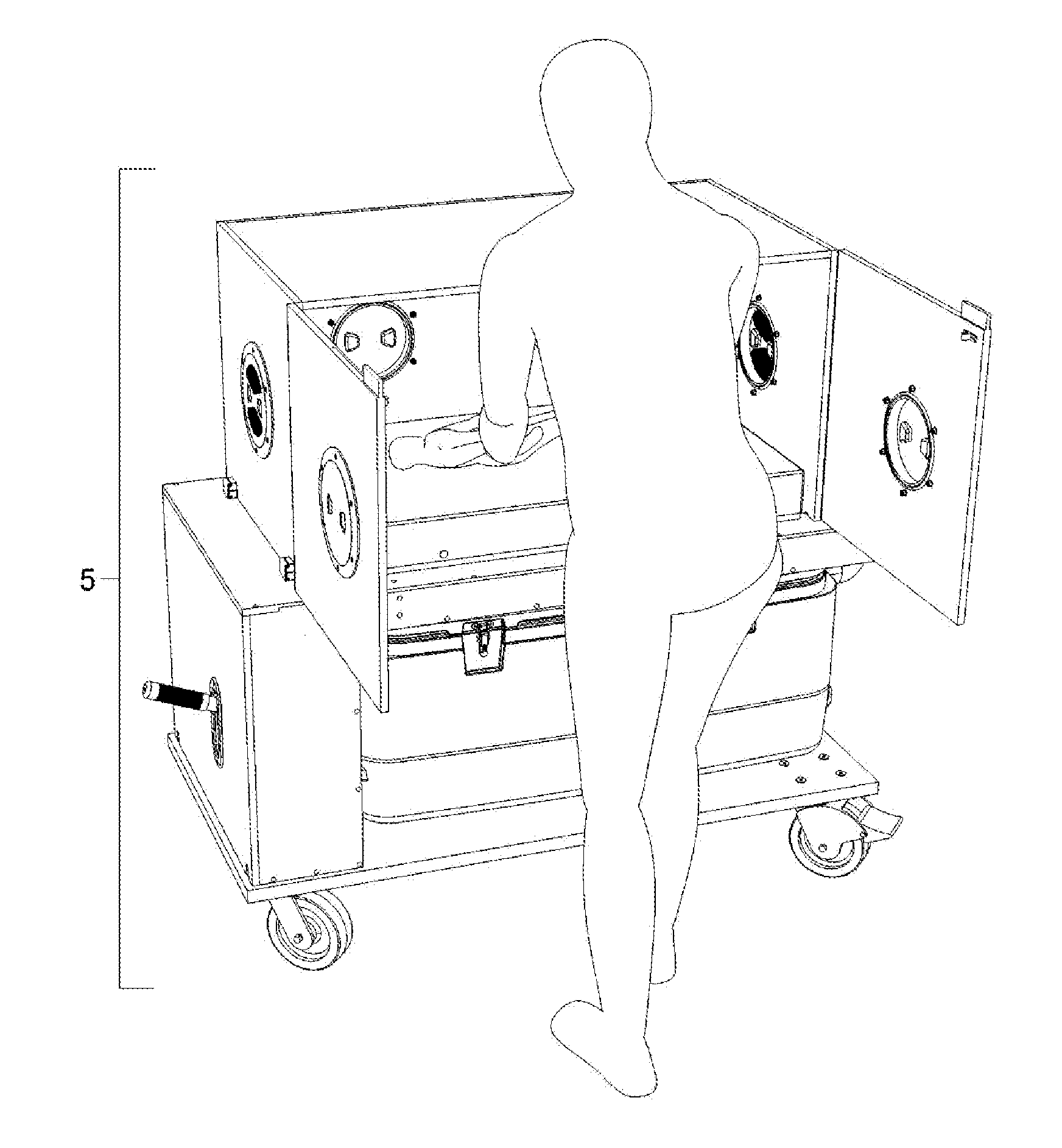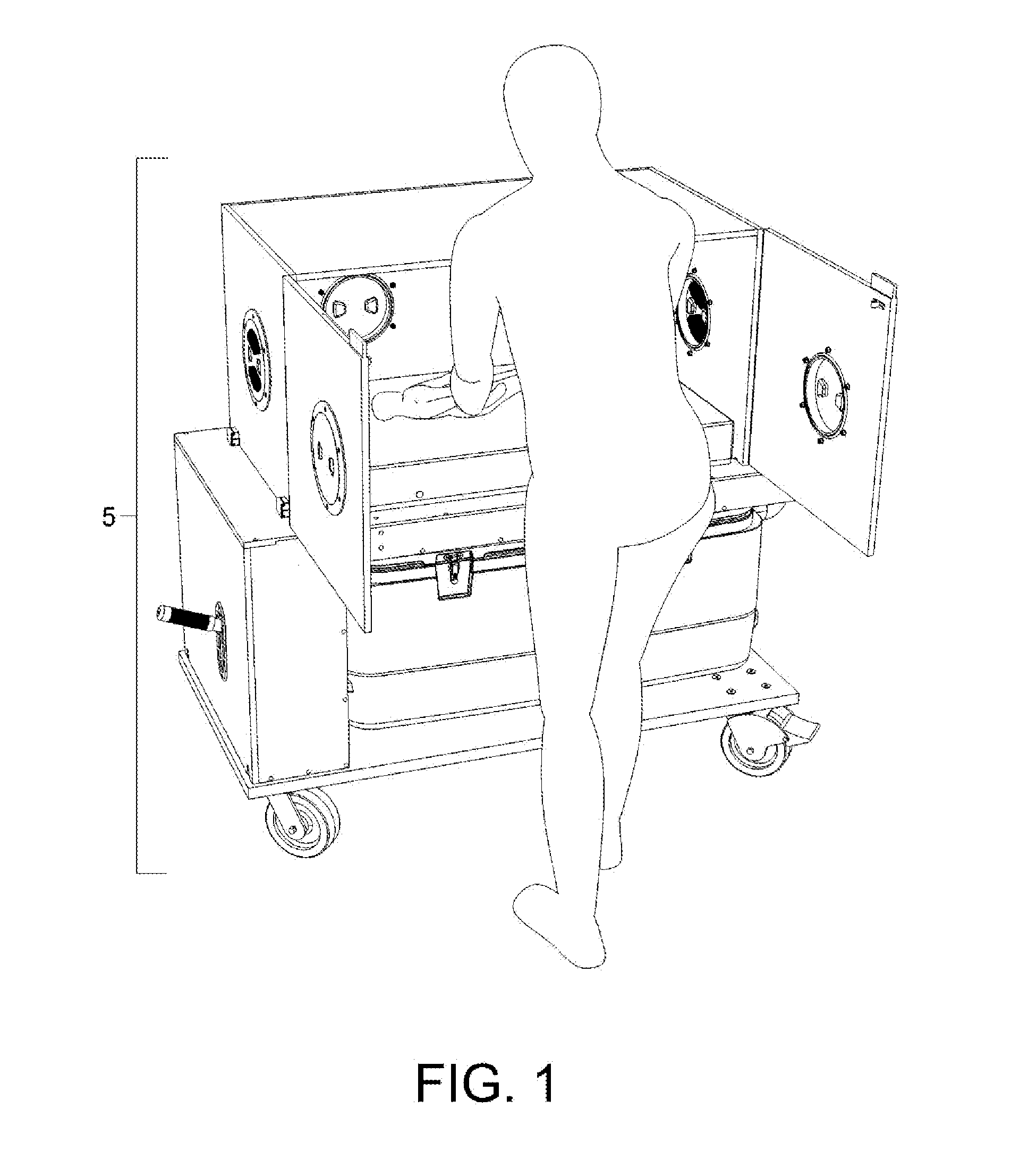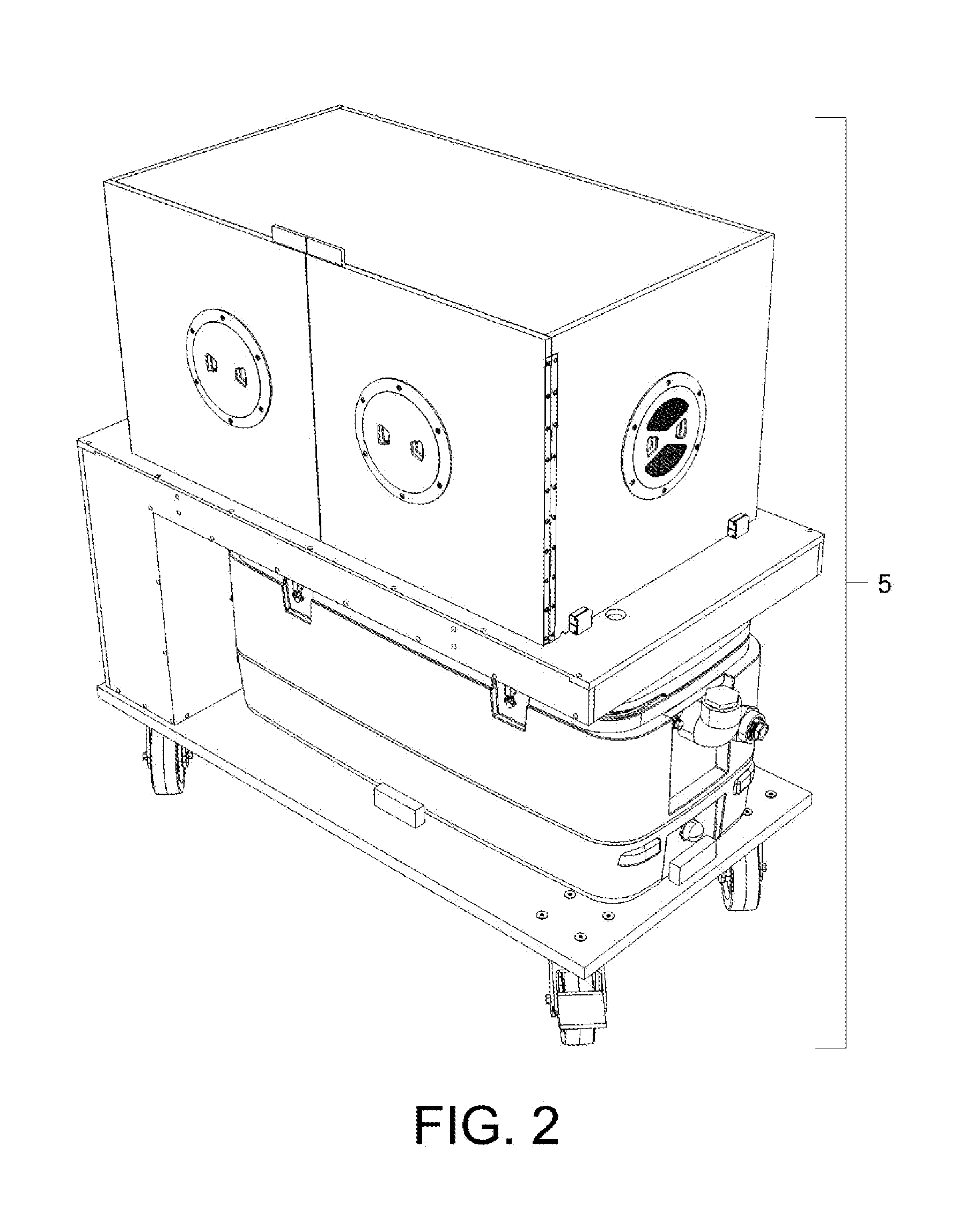Portable Neonatal Intensive Care Unit
a neonatal intensive care unit and portable technology, applied in the field of portable neonatal intensive care units, can solve the problems of largely unobtainable devices for users without special training, unfavorable medical care workers, medical science, etc., and achieve the effect of reducing heat loss
- Summary
- Abstract
- Description
- Claims
- Application Information
AI Technical Summary
Benefits of technology
Problems solved by technology
Method used
Image
Examples
Embodiment Construction
[0025]In reference to FIGS. 1-8, a neonatal intensive care unit (NICU) 5 is shown. FIG. 3 illustrates an exploded view of the unit 5. A transparent infant enclosure 10 is secured to a base unit 80. A coverlet 70 encasing a mattress 58 upon which to place an infant is positioned inside the enclosure 10. The base unit 80 has a support structure, a liquid reservoir, a heat exchanger, and a pump. The base unit 80 is affixed to a platform 130, which provides a rigid foundation for the incubator and mobility with wheels.
[0026]The infant enclosure 10 in FIG. 4 has a top wall 12, side walls 14, 22; a back wall 20 and front doors 16, 18; defining a chamber therein. The enclosure 10 may be composed of rigid transparent material, for example, a clear laminated acrylic sheet (polymethyl methacrylate). In some embodiments, the enclosure 10 may be made of Lexan (polycarbonate), PETG (glycol modified polyethylene terphthalate), laminated (safety) glass, or tempered glass. The top wall, side and ba...
PUM
 Login to View More
Login to View More Abstract
Description
Claims
Application Information
 Login to View More
Login to View More - R&D
- Intellectual Property
- Life Sciences
- Materials
- Tech Scout
- Unparalleled Data Quality
- Higher Quality Content
- 60% Fewer Hallucinations
Browse by: Latest US Patents, China's latest patents, Technical Efficacy Thesaurus, Application Domain, Technology Topic, Popular Technical Reports.
© 2025 PatSnap. All rights reserved.Legal|Privacy policy|Modern Slavery Act Transparency Statement|Sitemap|About US| Contact US: help@patsnap.com



